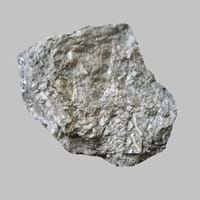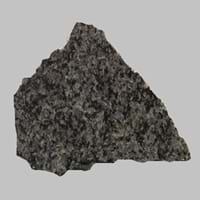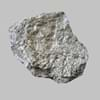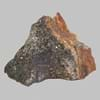Definition
Whiteschist is an uncommon rock type belonging to a class of metamorphic rock, this is formed at high-ultra-high pressures
Norite is a mafic intrusive igneous rock composed largely of the calcium-rich plagioclase labradorite, orthopyroxene, and olivine
Discoverer
Unknown
Unknown
Etymology
From French schiste, Greek skhistos i.e. split
From the Norwegian name for Norway, Norge
Class
Metamorphic Rocks
Igneous Rocks
Sub-Class
Durable Rock, Soft Rock
Durable Rock, Hard Rock
Group
Not Applicable
Plutonic
Other Categories
Fine Grained Rock, Medium Grained Rock, Opaque Rock
Coarse Grained Rock, Opaque Rock
Texture
Foliated
Phaneritic
Color
Colourless, Green, Grey, White
Dark Grey to Black
Durability
Durable
Durable
Scratch Resistant
Yes
Yes
Appearance
Banded and Foilated
Veined and Shiny
Interior Uses
Decorative Aggregates, Interior Decoration
Decorative Aggregates, Entryways, Interior Decoration
Exterior Uses
Garden Decoration, Paving Stone
As Building Stone, As Facing Stone, Paving Stone, Garden Decoration
Other Architectural Uses
Curbing
Curbing
Construction Industry
for Road Aggregate
As Dimension Stone, Building houses or walls, Cement Manufacture, Construction Aggregate, for Road Aggregate
Medical Industry
Not Yet Used
Not Yet Used
Antiquity Uses
Artifacts, Monuments, Sculpture, Small Figurines
Artifacts, Monuments, Sculpture
Commercial Uses
Creating Artwork, Gemstone, Jewelry, Production of Lime
Cemetery Markers, Commemorative Tablets, Laboratory bench tops, Jewelry, Sea Defence, Tombstones
Types
Not Available
Not Available
Features
High percentage of mica, Host Rock for Lead
Smooth to touch
Archaeological Significance
Famous Monuments
Data Not Available
Data Not Available
Famous Sculptures
Data Not Available
Data Not Available
Pictographs
Used
Not Used
Petroglyphs
Used
Not Used
Formation
Whiteschist is formed by dynamic metamorphism at high temperatures and pressures that aligns the grains of mica, hornblende and other elongated minerals into thin layers.
Norite is a fine-grained, hard rock which is a type of metasomatite, essentially altered basalt. It forms with or without crystallization, either below the surface as intrusive rocks or on the surface as extrusive rocks.
Mineral Content
Carbonate, Coesite, Quartz, Silica
Augite, Olivine, Plagioclase, Pyroxene
Compound Content
CaO, Mg, MgO, Silicon Dioxide
Aluminium Oxide, CaO, Chromium(III) Oxide, Iron(III) Oxide, Potassium Oxide, MgO, Sodium Oxide, Silicon Dioxide, Sulfur Trioxide
Types of Metamorphism
Not Applicable
Cataclastic Metamorphism, Impact Metamorphism
Types of Weathering
Biological Weathering, Chemical Weathering, Mechanical Weathering
Biological Weathering
Types of Erosion
Chemical Erosion, Coastal Erosion, Glacier Erosion
Chemical Erosion, Coastal Erosion
Grain Size
Fine to Medium Grained
Coarse Grained
Fracture
Conchoidal
Conchoidal
Porosity
Less Porous
Highly Porous
Luster
Subvitreous to Dull
Not Available
Cleavage
Perfect
Not Available
Specific Gravity
2.86
2.86-2.87
Transparency
Opaque
Opaque
Density
2.8-2.9 g/cm3
2.7-3.3 g/cm3
Specific Heat Capacity
Not Available
Resistance
Heat Resistant
Impact Resistant, Pressure Resistant, Wear Resistant
Deposits in Eastern Continents
Asia
Afghanistan, Bangladesh, Bhutan, China, India, Japan, Kazakhstan, Malaysia, Pakistan, Russia, Thailand, Turkey, Vietnam
India, Russia
Africa
Egypt, Ethiopia, Morocco, Nigeria, South Africa
South Africa
Europe
Austria, England, France, Georgia, Germany, Italy, Liechtenstein, Monaco, Norway, Slovenia, Spain, Sweden, Switzerland
Germany, Greece, Italy, Scotland, Turkey
Others
Not Yet Found
Greenland
Deposits in Western Continents
North America
Canada, Costa Rica, Cuba, Mexico, Panama, USA
Canada, USA
South America
Brazil, Colombia, Guyana
Brazil, Colombia, Venezuela
Deposits in Oceania Continent
Australia
New South Wales, New Zealand, Queensland
New Zealand, Queensland










